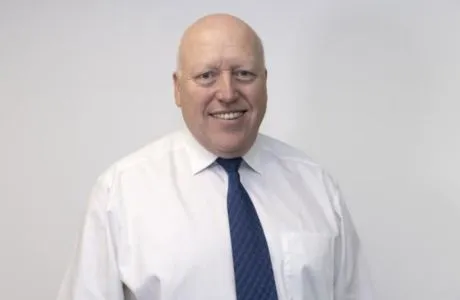
We now have the prime minister’s latest “roadmap” to a semblance of normality. Although it is cautious and slow, it at least gives everyone some focus; and, for those of us with kids, a well-earned reprieve, happy that we will be able to wave them off to school once more while the other hand clutches a bottle of gin to down as soon as they are out of sight.
Hopefully by the summer we can all get together in a nice beer garden and look back with relief on the madness of the past year or so.
I was delighted to feel a small prick in my arm last week, and I must say, while the way the government seems to have dealt with the crisis overall seems woeful, the vaccine rollout appears elite. When I went along it worked like a well-oiled machine and you can see how they are getting through so many people in such a quick timescale. Long may it continue.
That aside, it’s all been about the Budget, and what goodies or baddies the chancellor has bestowed on us this time.
The usual leaks started to appear in the press a week or so ago and included: an extension of the stamp duty holiday, the re-introduction of Help to Buy 1 and guarantees for lenders around 95 per cent LTV mortgages, potential changes to capital gains tax — moving in line with income tax — for certain items such as second properties, and increases to corporation tax. So what did we get?
No surprises
In terms of stamp duty, we got basically what was expected — an extension until the end of June, but also an attempt at tapering.
The government extended the temporary increase in the residential SDLT nil-rate band to £500,000 in England and Northern Ireland until 30 June. From 1 July, the nil-rate band will reduce to £250,000 until 30 September, before returning to £125,000 on 1 October.
The taper is better than nothing, but the chancellor could have made it a little more scientific and it does not mean that there will not still be a rush at each deadline, putting more pressure on the system. I can hear conveyancers weeping from here…
The other big thing that was eventually leaked had been discussed for a while — the return of the mortgage guarantee scheme, without its Help to Buy label.
As ever, the devil is in the detail, but we understand that this will be available to all buyers on all properties up to £600,000. All mortgages will have to be repayment, not interest-only, and all participating lenders will be required to offer a five-year fixed-rate product.
It must be a residential mortgage, not a second home, and not a buy-to-let.
Name-checked were Barclays, HSBC, Lloyds, NatWest and Santander, which will offer 95 per cent mortgages from next month, with more including Virgin Money after that, Sunak said.
There may be slightly stricter rules around maximum income multiples, but this remains to be seen.
We do not know what rates will look like under the scheme; but, with current 90 per cent LTV rates around 3.25 per cent to 3.5 per cent, you would assume they will be slightly higher. However, we don’t know what effect the government guarantee will have on pricing models, so they may be cheaper than many expect.
Whatever your views, this will make a big difference to those struggling to save a larger deposit, and to many first-time buyers unable to take advantage of the stamp duty holiday due to the lack of this product type.
Hero to Zero
All the excellent women we have in our industry
HSBC – for accepting local search indemnity insurance
Stamp duty extension – not perfect but a lot better than nothing
The confusion over Brexit in financial services
Continued issues and extra expense for many firms renewing PI cover
Financial Services Compensation Scheme levy – some serious questions need answering
Demand-side prop
Critics will point to yet another demand-side prop for the housing market that will potentially keep house prices from falling. This was proved by the latest Nationwide House Price Index, with prices recording yet another rise, to 6.9 per cent year on year.
This shows that potentially the effect of the stamp duty holiday is not as strong as some think, but points to an underlying demand of increased savings, low rates and a desire to move after a year of lockdowns.
Either way, this is further evidence that it is hard to wean an industry off the drugs supporting it, but there will be many potential buyers desperate to move who are happy for the opportunities this all brings.
A cursory glance at the money markets seems to show that the threat of negative interest rates has abated slightly, with three-month Libor up a touch at 0.07 per cent while swap rates have also increased. It’s a good time also to introduce a new friend of mine, Sonia (the Sterling Overnight Index Average), as this will replace Libor next year, I believe.
Three-month Sonia stands at 0.05 per cent, which will usually be slightly lower than Libor. If that’s wrong, please would someone feel free to correct me!
- 2-year money is up 0.13% at 0.25%
- 3-year money is up 0.21% at 0.39%
- 5-year money is up 0.31% at 0.62%
- 10-year money is up 0.04% at 0.97%
The market continues on its own path to normality, which is also cautious and slow but will begin to gather pace. Already we see more product availability and a slight increase in competitiveness. What is extraordinary is the small difference between the best two-year fixes and the best five-year fixes — only 0.1 per cent.
In another sign that the market may be settling down, according to Moneyfacts the average time a mortgage product is around has risen from 28 days in the past three months to 40 days. More stability of rate availability is a good thing indeed.
Moneyfacts also mentions that mortgage availability is at an 11-month high, with product choice increasing by a whopping 42 per cent since October. Leading the way is the return of the 90 per cent LTV market, with 88 more deals available at that level than last month. There are 248 products, up 386 per cent since October.
I suspect that the second half of this year will see the cost of these high-LTV products fall a lot further as the stamp duty eventually ends, the proposed government guarantee scheme comes into play and lenders revert to their normal competitive battle stance.
More good news has come from HSBC, which is accepting annual bonus payments again as long as a payment has been received since 1 January.
Income multiples are strange right now. On one hand there is a return to higher income multiples, with HSBC also lending five times income for higher earners; and, for those earning over £75,000 and with at least a 20 per cent deposit, Barclays may lend up to 5.5 times income. On the other hand, Clydesdale Bank has reduced its LTI to 4.49 times where an applicant is self-employed, and Virgin Money has done the same for all lending above 80 per cent LTV. They are not alone. It’s almost as if lenders were planning for something….
In the specialist realm, UTB has an FTB range for “underserved customers” up to 80 per cent LTV, while in buy-to-let Accord has raised its lending limit for established landlords from £1m to £3m, and the maximum number of properties from three to five.
It looks like the late nights will continue for a while, so remember to take some time out for yourselves.
What Really Grinds My Gears?
There’s a lot of talk, rightly, about diversity and inclusion. We have not touched the sides of ethnicity, sexuality and disability as an industry, and I was dismayed by how far we still have to go around the gender pay gap. A lot of progress has been made, and things do seem to be changing, but they need to change more quickly.
I was lucky enough to appear on two podcasts with two amazing women: The Practical Protection Podcast with the wonderful Kathryn Knowles of Cura Financial, and the Mortgage Mum Podcast with the amazing Sarah Tucker. I have also shared the Clubhouse stage with the brilliant Kim McGinley of Vibe Finance.
I know there are many others, but here are three young women who are inspirational leaders in our industry, following trailblazers like Esther Dijkstra, Gemma Harle, Maria Harris, Sally Laker and Louisa Sedgwick, to name but a few.
This is just to say that we love what you are doing. Keep doing it. Keep breaking glass ceilings. Keep making your voice heard and inspiring other young women into financial services.
The future is looking rosy in your hands.



